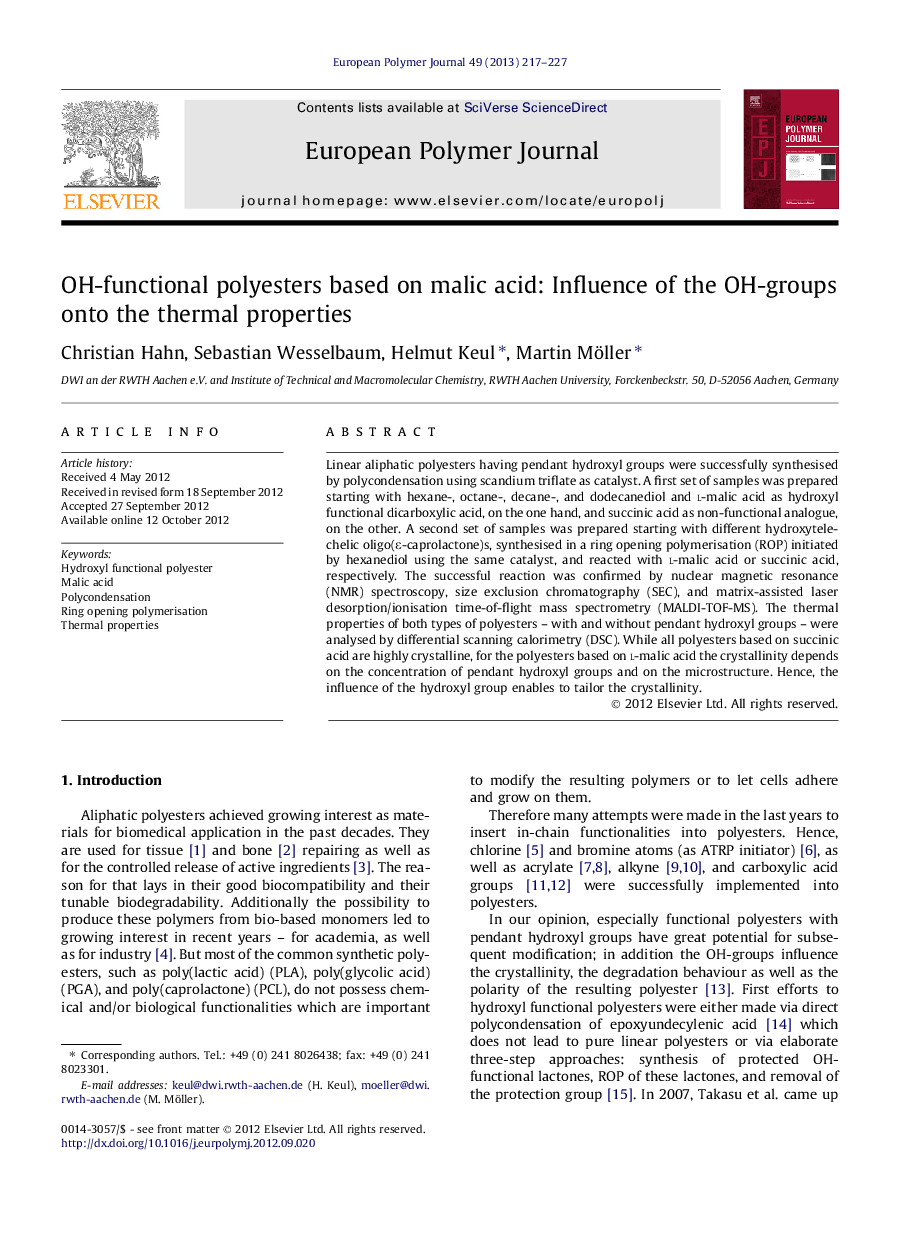| Article ID | Journal | Published Year | Pages | File Type |
|---|---|---|---|---|
| 1395893 | European Polymer Journal | 2013 | 11 Pages |
Linear aliphatic polyesters having pendant hydroxyl groups were successfully synthesised by polycondensation using scandium triflate as catalyst. A first set of samples was prepared starting with hexane-, octane-, decane-, and dodecanediol and l-malic acid as hydroxyl functional dicarboxylic acid, on the one hand, and succinic acid as non-functional analogue, on the other. A second set of samples was prepared starting with different hydroxytelechelic oligo(ε-caprolactone)s, synthesised in a ring opening polymerisation (ROP) initiated by hexanediol using the same catalyst, and reacted with l-malic acid or succinic acid, respectively. The successful reaction was confirmed by nuclear magnetic resonance (NMR) spectroscopy, size exclusion chromatography (SEC), and matrix-assisted laser desorption/ionisation time-of-flight mass spectrometry (MALDI-TOF-MS). The thermal properties of both types of polyesters – with and without pendant hydroxyl groups – were analysed by differential scanning calorimetry (DSC). While all polyesters based on succinic acid are highly crystalline, for the polyesters based on l-malic acid the crystallinity depends on the concentration of pendant hydroxyl groups and on the microstructure. Hence, the influence of the hydroxyl group enables to tailor the crystallinity.
Graphical abstractFigure optionsDownload full-size imageDownload as PowerPoint slideHighlights► Polyesters based on diols and succinic or l-malic acids were prepared. ► Polycondensation of malic acid and diols leads to linear OH-functional polyester. ► Polycondensation reactions were performed using scandium triflate as catalyst. ► The presence of OH groups decreases the crystallinity of these polyesters. ► Structure property relationships were determined.
